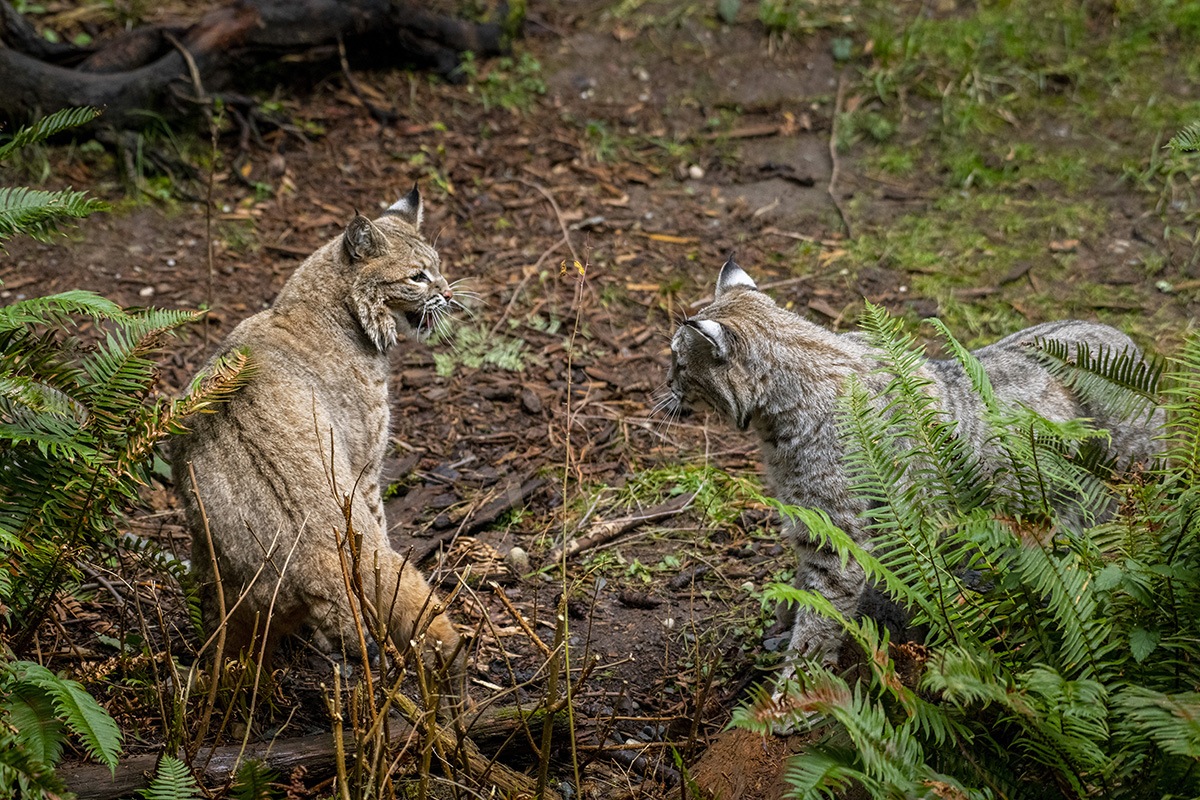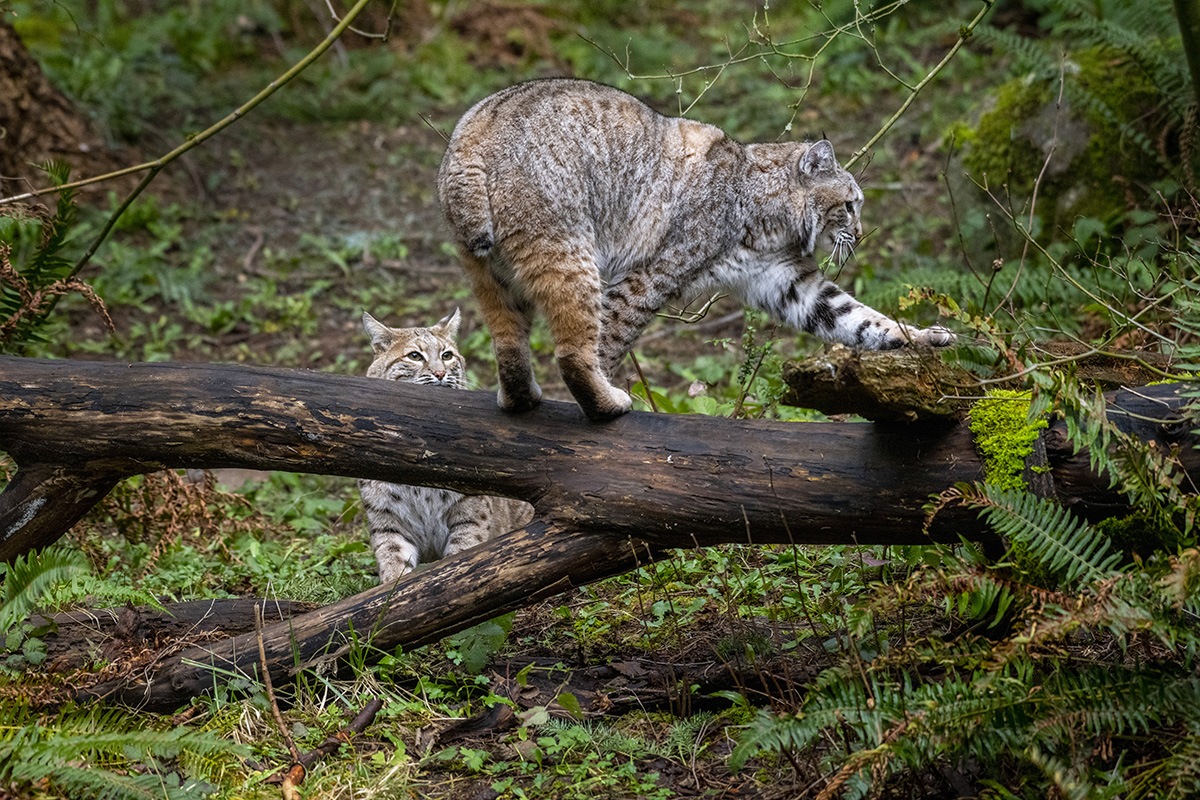Bobcat
Spots. Streaks. Tufty ears, a tiny tail. Our bobcats are great climbers, hunters and communicators. Come meet them!

Our two male bobcats are both rescues, but from different backgrounds. Tanner was born in the wild around 2012, and brought to Northwest Trek from a wildlife rehabilitation center in Montana (hence his name!). Tahoma came here in 2020, having been kept illegally as a pet before being surrendered to a wildlife rehabilitation center. His name comes from the Indigenous name for Mt. Rainier.

When they were first introduced, Tanner climbed a tree and Tahoma stayed on the ground, just looking. They soon got comfortable sharing their habitat, even playfully chasing each other around! Right now they’re living separately again until habitat renovations are complete.
|
Spots & stripes
and two names
|
Also called a wildcat, bobcats can be light brown, gray or black with spots or streaks. They're found almost everywhere in America. |
They have a short tail with black tip, and ears with tufty black hair at the tip and white on the back. |
|
Climbing and solitary
to hunt at night.
|
Bobcats are excellent climbers. Territorial and solitary, they hunt at twilight or nighttime. |
They eat small mammals, birds, reptiles, invertebrates and occasionally deer. |
|
Making noise
(especially the ladies).
|
Bobcats communicate with a range of vocalizations. During breeding season, females are especially vocal. |
After an 8-week pregnancy, females give birth to two or three kittens weighing about ½ lb. |